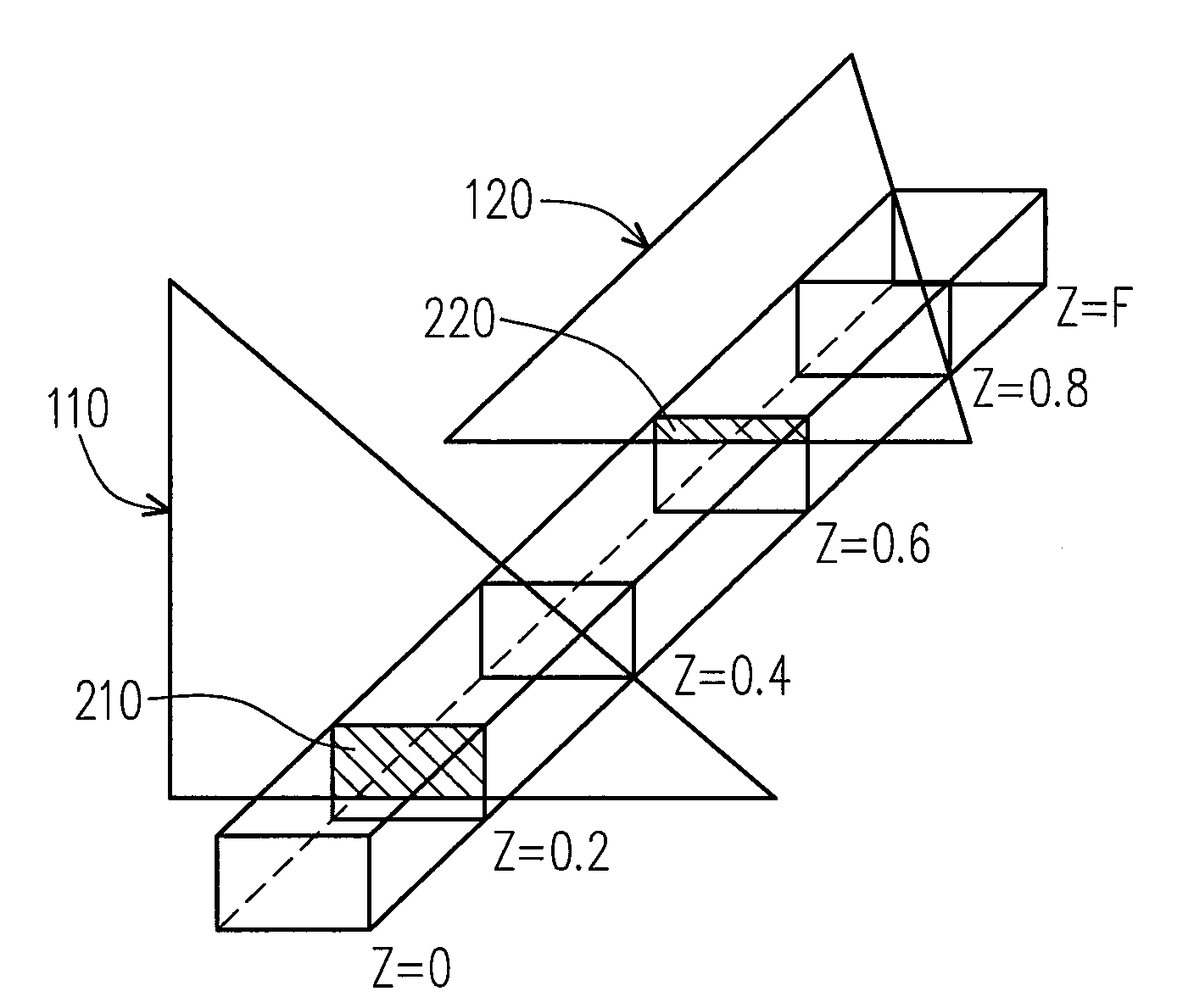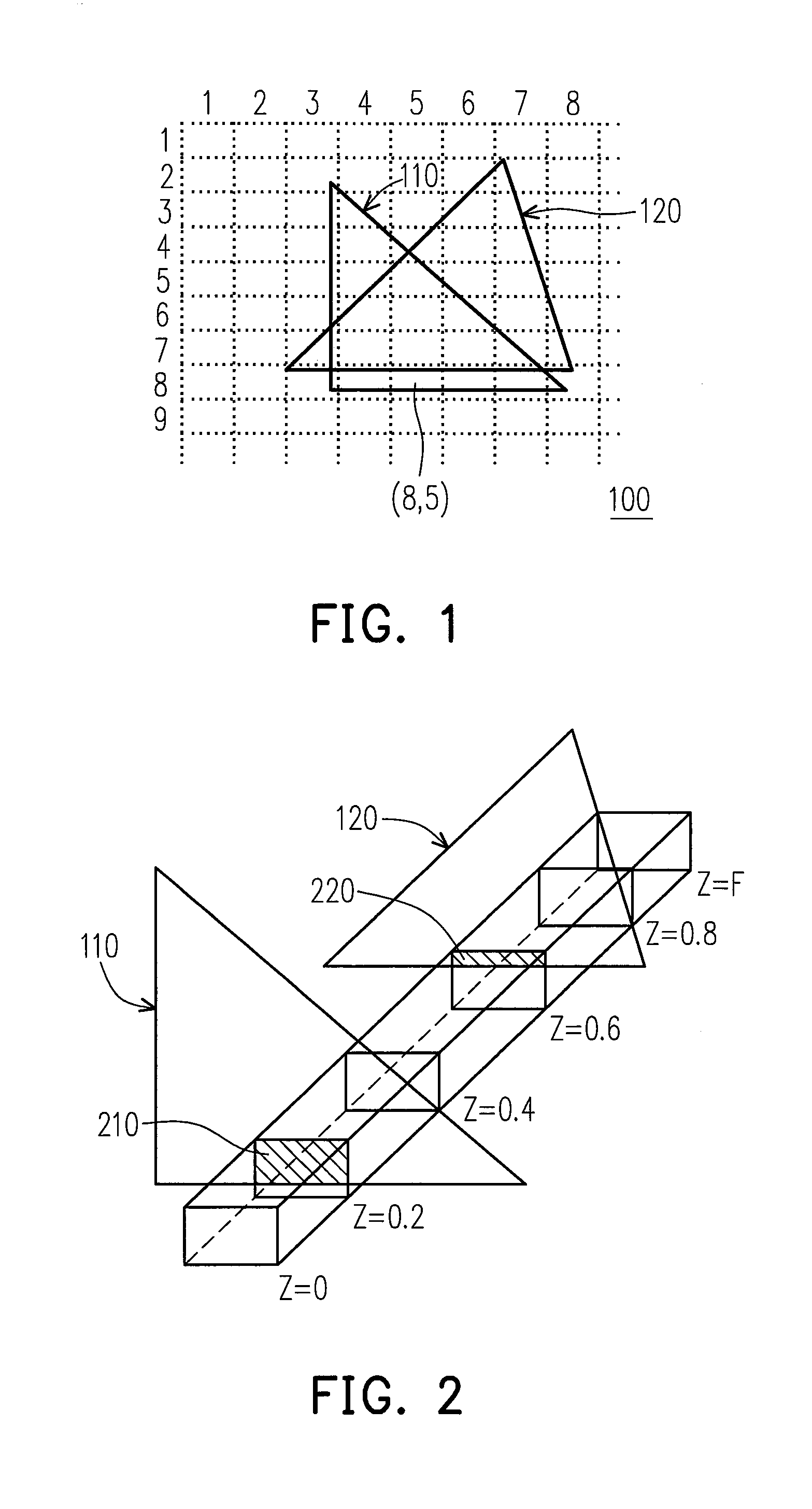Z-culling method, three-dimensional graphics processing method and apparatus threrof
a three-dimensional graphics and processing method technology, applied in the field of three-dimensional (3d) graphics processing methods, can solve the problems of the bandwidth between the system memory and the gpu is a major bottleneck affecting the speed of graphics processing, and the depth complexity of 3d scenes is considerably high, so as to reduce the access frequency of the system memory and the bandwidth taken up, the effect of reducing the read and write frequency
- Summary
- Abstract
- Description
- Claims
- Application Information
AI Technical Summary
Benefits of technology
Problems solved by technology
Method used
Image
Examples
Embodiment Construction
[0032]Descriptions of the invention are given with reference to the exemplary embodiments illustrated with accompanied drawings, wherein same or similar parts are denoted with same reference numerals. Moreover, elements / components / notations with same reference numerals represent same or similar parts in the drawings and embodiments.
[0033]In current 3D graphics processing methods, the Z-buffering techniques are usually performed in two parts. In a first part, the 3D scene is labeled by using the tile on the screen as a unit, so as to roughly identify the approximate location of the 3D scene in each tile. Moreover, whether the 3D scene has been completely covered is determined. This first part is referred to as the coarse Z-culling process, or the Z-culling process. After completing the first part, in a second part, the present embodiment compares the coverage state of each 3D scene by using the pixel as a unit, and thereby a precise Z-culling process is performed.
[0034]In some embodi...
PUM
 Login to View More
Login to View More Abstract
Description
Claims
Application Information
 Login to View More
Login to View More - R&D
- Intellectual Property
- Life Sciences
- Materials
- Tech Scout
- Unparalleled Data Quality
- Higher Quality Content
- 60% Fewer Hallucinations
Browse by: Latest US Patents, China's latest patents, Technical Efficacy Thesaurus, Application Domain, Technology Topic, Popular Technical Reports.
© 2025 PatSnap. All rights reserved.Legal|Privacy policy|Modern Slavery Act Transparency Statement|Sitemap|About US| Contact US: help@patsnap.com



